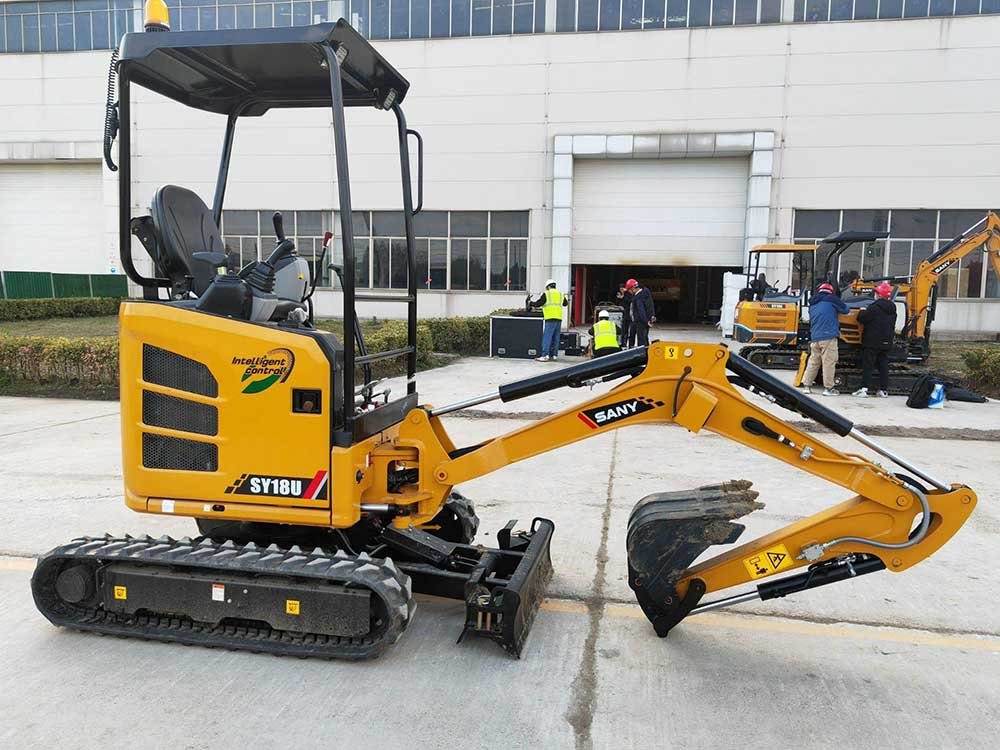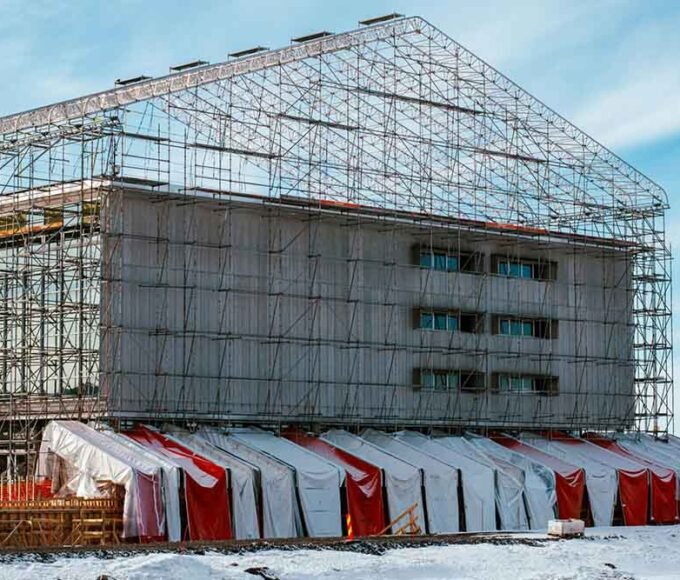Excavators are multifunctional excavation equipment used in both landscaping and construction projects. Yet, a traditional excavator is quite large and may not be suitable for tight spaces. This is where the mini excavator proves useful.
Mini excavators feature a compact build, enabling them to maneuver and function in limited spaces on job sites. Plus, these mini excavators are available in various sizes.
Here is a comprehensive guide to the different sizes of mini excavators and advice on choosing the appropriate size for your upcoming project.
Let’s Understand Different Mini Excavators According To Their Sizes
| Mini Excavators According to Weight | Most Common Uses |
| ● Excavators less than 1 ton | ● Mostly used for shallowing digging and trenching |
| ● Mini excavators between 1 to 10 tons | ● Tearing down small structures
● Trenching ● Grading |
| ● Excavation equipment between 3 to 5 tons of weight | ● Digging foundation
● Preparing worksite ● Handling material ● Trenching ● Grading |
| ● Mini excavators between the weight of 6 to 10 tons | ● Demolition
● Trenching ● Grading ● Handling material ● Foundation digging ● Backfilling |
Tips To Choose The Right Size Mini Excavator for Your Next Project
One fundamental thing to understand when choosing excavator size is your needs and requirements. Many factors influence the right size selection. Let’s look at some tips that will help you choose the ideal excavation equipment.
#1 Shape and Size of The Worksite
One key factor to keep in mind is the layout of the job site since your excavator must be able to move around within these confines. Consequently, the width of the mini excavator becomes an essential aspect to consider.
To ensure the best fit, take measurements of the tightest spaces on your job site and select an excavator that can efficiently pass through these areas.
#2 Kind of Work That Needs To Be Done
Mini excavators are adaptable and capable of handling various tasks, though certain models are better equipped for specific types of work.
Consider aspects such as the depth of excavation required and the weight capacity needed for lifting. By assessing the necessary capabilities first, you can identify the mini excavator that is the most appropriate size for your project.
#3 Attachments and Tools For The Mini Excavator
In addition to deciding the specific tasks you need your excavator to perform, you must also consider the types of tools and attachments you require for your mini excavator. This decision will influence both the size of the excavator you choose and its capacity to move around your work area effectively.
Keep in mind the attachments you need when selecting the size of your mini excavator to guarantee it can still navigate efficiently.
#4 Excavator Transportation Arrangements
When selecting the size of your new mini excavator, consider your transportation options. Opt for an excavator that is compact and light enough to be easily towed by the equipment you have available.
#5 Operating Weight Of The Mini Excavator
The operating weight of a mini excavator is crucial for determining its lifting capacity, which depends on the lift’s height and radius. This weight also defines the pressure the mini excavator applies and its impact on the ground.
Benefits of Working with Mini Excavators
Gives more Accessibility
Regular-sized excavators often face limitations in accessing areas on a construction site. The smaller dimensions of a mini excavator enhance its accessibility in confined spaces.
This increased accessibility allows for greater use of an excavator in various parts of a construction project, particularly in renovation work.
For instance, in renovation work where space constraints are common, mini excavators offer the flexibility needed to navigate through narrow passages, tight corners, and areas with restricted access.
Their compact size allows them to access areas that would be challenging or impossible for larger machinery to reach, thereby maximizing efficiency and productivity on the job site.
Whether it’s digging trenches, excavating foundations, or performing landscaping tasks in residential or urban settings, mini excavators excel in situations where space is limited and maneuverability is essential. By providing easier access to hard-to-reach areas, mini excavators contribute significantly to the smooth execution of construction projects, ensuring that no space goes undeveloped or underutilized.
Less Damage To Worksite
Furthermore, mini excavators tend to cause less damage to the worksite due to their smaller size and lighter weight compared to regular excavators. Their reduced footprint minimizes soil compaction and disturbance, making them suitable for working in sensitive environments such as landscaped areas or areas with underground utilities.
Moreover, the lighter weight of mini excavators reduces the likelihood of damaging existing structures or pavements during operation. This aspect is particularly advantageous in urban areas where space is limited, and precision is crucial.
Additionally, the compact size of mini excavators allows them to navigate through narrow pathways and tight spaces without causing disruption or obstruction to surrounding areas.
Simple To Control
One of the standout advantages of mini excavators lies in their ease of control. These machines are designed with user-friendly interfaces and intuitive controls, making them accessible even to operators with limited experience.
Unlike larger excavators, which may require extensive training and practice to master, mini excavators can be quickly understood and operated effectively.
Their simplified control systems streamline construction tasks, allowing operators to focus more on the job at hand rather than grappling with complex machinery.
Final Words
Choosing the right size mini excavator for your project requires careful consideration of various factors. These include assessing the dimensions of the job site, understanding the specific tasks required, and determining the necessary attachments for optimal performance.
By selecting a mini excavator that fits the project’s requirements snugly, you can enhance efficiency and productivity while minimizing potential damage, particularly in confined spaces where maneuverability is essential.
A properly sized mini excavator not only reduces the need for extensive training but also streamlines operations, allowing for smoother execution of tasks.
Ultimately, the careful selection of excavation equipment is crucial for ensuring project success and achieving the desired outcomes within budget and on schedule.
Therefore, take the time to assess your project needs thoroughly and choose the right mini excavator that aligns with your objectives for a seamless construction process.
















